What happens when you combust sulphur? You get blue flames which is also known as blue fire. Indonesia is home to a unique volcano crater where huge amounts of sulphur are burnt constantly to create the special phenomenon called blue fire, flicking on the surface of the volcanic rocks. Travelers from all over the world head to Indonesia to view the blue fire at Mount Ijen in Banyuwangi.
Getting there
There are multiple ways to get to Banyuwangi. You could take a domsetic flight from Surabaya to Banyuwangi and either engage a local tour group or trek on your own to Mount Ijen. From my research, Banyuwangi and Bali are separated by a 45 minute ferry ride and many travelers string the 3 mountains (Mount Batur, Mount Ijen and Mount Bromo) in a single trip.
Having conquered Mount Batur last year, we decided to climb Mount Bromo and Ijen this time and spend the next 2 days relaxing in Indonesia. After our Mount Bromo climb, our driver drove us from Cemoro Lawang village to Banyuwangi. The drive took us about 8 hours, including lunch and toilet stops. The hotel we stayed at Banyuwangi was the Ketapang Indah Hotel, booked by Blue Flame Tour.
The ambiance in the hotel was amazing. After hours on the road, the hotel welcomed us with its lush greenery, laid back and welcoming vibes. The surroundings were really clean and the buildings not packed wall to wall. We decided to extend another night in the hotel and it was well worth the time and money. (Approx. $50 sgd a night)
Blue fire tour
Part 1: Starting point
Our driver, Mr Mirza, dropped us at the entrance of the national park where Mount Ijen resided, with our Ijen tour guide, Mr. Hassan. At the start point/entrance, there is a toilet for all climbers which costs Rp 2000 for each person. Do make your toilet trip as there are no toilets along the way!
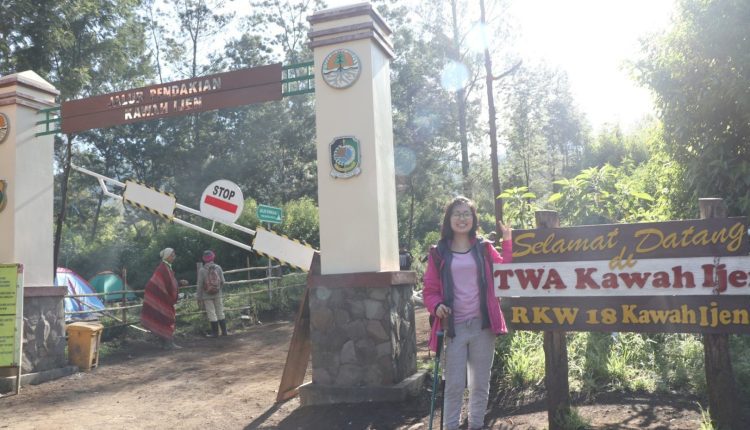
After packing our gas-masks and touch lights into our bags, Mr Hassan began his safety briefing with us.
Mount Ijen consists of 4 sections:
- The first section is the easiest and stretches about 1km with low to medium slope gradient. Fairly easy to walk.
- The second section is approximately 1.5km with medium to high slope gradient.
- The third section to the summit is approximate 1.5km with flat to low gradient. At this point, you will begin to smell the famous ‘rotten eggs’ aroma, aka the sulphur smell, as you approach the crater. It is not harmful, so do not wear your gas mask yet!
- The last section is the descend to the middle of the crater. If you are feeling breathless, it is advisable to wait at the summit for the sunrise instead. Otherwise head down for the blue fire.
We were surprised when miners gathered at the entrance, offering to wheel us up to the summit for a fee. It felt weird and uncivilized, but our guide told us that they earn more from ferrying tourists than mining for sulphur. If you are not prepared for the long hike, there is no shame in engaging the ‘taxi’ up the mountain.
With our boots laced up and hiking sticks out, we began our journey to the crater!
Part 2: Summit of Mount Ijen
The first section had gone by like a breeze. Looks like our training back in Singapore was not wasted.
Once we started on the second section, we slowed down our pace, taking breaks every 10 minutes. Our guide waited for us patiently to catch our breath throughout the 30 minutes hike up. Luckily, the road is paved with gravel, which makes the hike much easier.
Once we hit the third section, we let out a joyful squeak after discovering that the route will be mainly flat terrain. At this point, we began to smell the ‘rotten egg’ odour. Our guide told us that the odour was not harmful at all at this point. He advised against wearing the gas mask at this section as it could inhabit our oxygen intake and in turn slow us down. Taking his advice, we picked up speed and headed to the summit.
At the summit, Marilynn declared that she needed a rest and could not carry on further. Our guide told us that if we were to catch the blue fire, we would need to go light and fast. The window period to head down was about to be closed. I proceeded to unload the additional water bottles and my tripod (which was a huge mistake!), thinking I could get a steady shot down below.

Part 3: Blue Fire of Kawah Ijen or Mount Ijen
The route down the crater is rough and a little dangerous because of the lack of railings. Coupled with the darkness, I had to struggle to find proper footing during the descend. So do watch your step and it might be useful to get a headlamp. The headlamps would free your hands to grab onto the big rocks for support.
The path down is narrow and allows 1 person to be on the steps at any given time. Do not push each other and continue to encourage one another as the end is near. Watch out for the miners as they climb the same steps up to the summit. Carrying 70kg of sulphur in each load, do give way to them as much as possible. Looking at the miners carrying such heavy loads of sulphur on their backs and earning SGD 0.10 for each kilogram of sulphur made us appreciate what we had. This is one tough job with health risks involved.
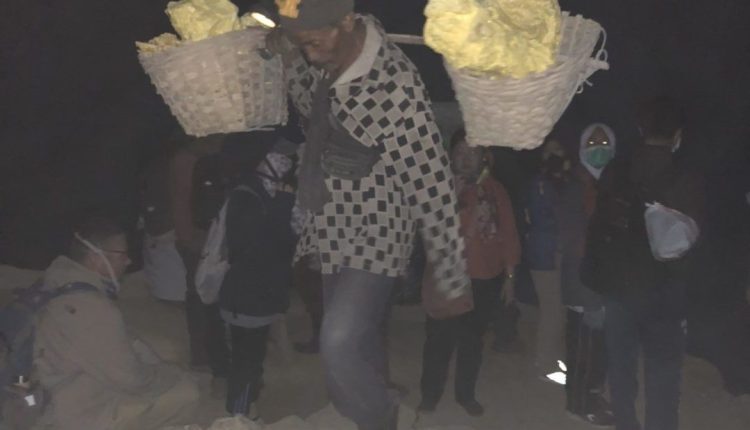
Once you are down at the crater, the blue fire will flicker in sight. When I was there, all I could see was a small ball of blue light slightly above the water. The guide told me that the day we went was a bad day as there was not much activity from the sulphur. Without my tripod!, this was all I could take:
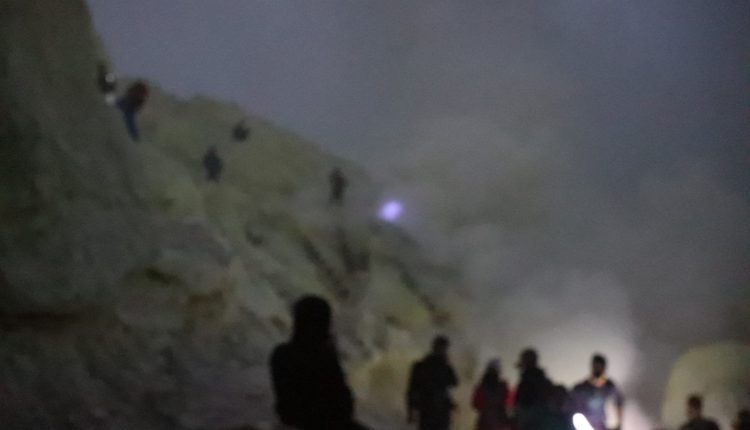
Our guide told us that the best time to see the blue fire is in September where the blue fire activity is at its peak.
Part 4: Walking along the crater rim
Mount Ijen is not just about the blue fire. The lake and surrounding areas offer a spectacular view. It felt like we were walking among the clouds, high up in the sky.
Mr Hasan shared with us that it was his 202th time up Mount Ijen in the past 4 years and brought us to his favourite spot to view the lake and the other mountains. Unfortunately for us, the area was cloudy and we did not get the shots we want. Nevertheless, we were happy just chilling at the peak.
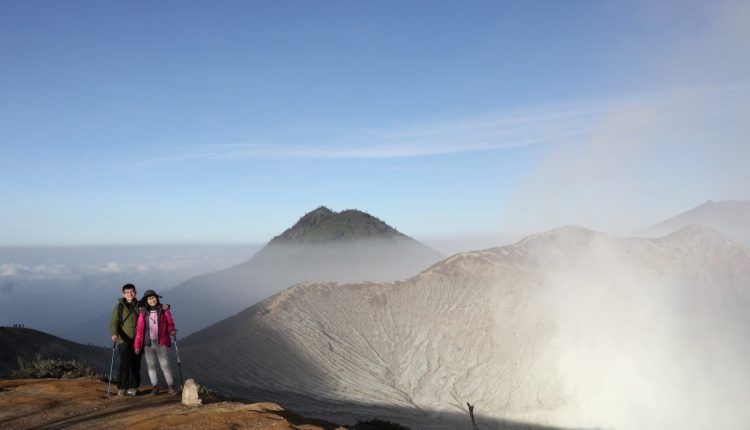
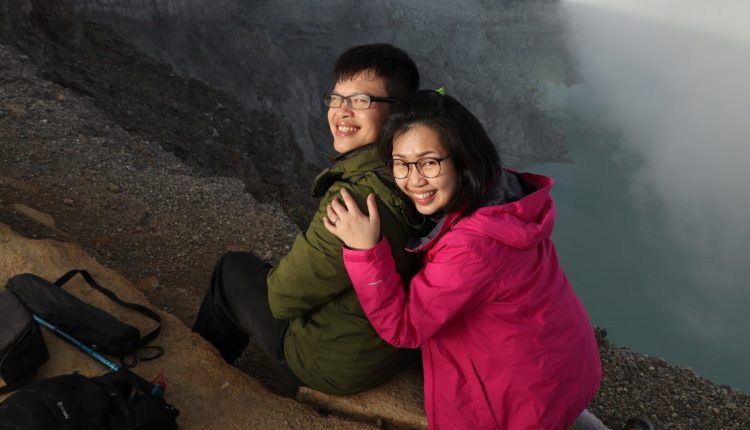
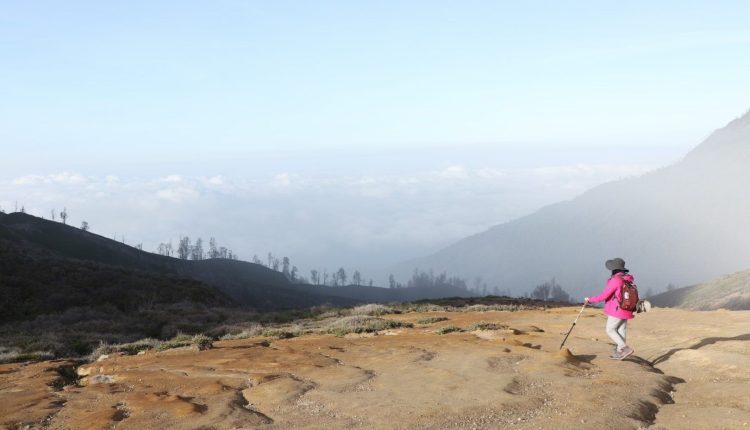
Afterword
Mount Ijen is definitely tougher as compared to Mount Bromo, but with its clearly marked path to the summit, it makes it a simpler mountain to climb compared to Mount Batur in Bali. Do ensure you have proper footwear with good grip as the the descend to the crater is rocky and slippery.
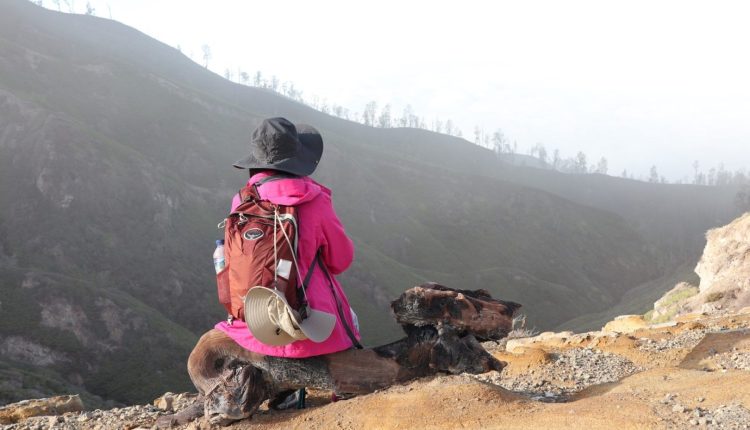
Blue Flame Tours
A big shout-out to Blue Flame Tours for their excellent and warm service. We experienced Indonesian hospitality at its finest. Our private driver, Mr Mirza was very attentive to our needs and knew that when we were awake from our naps in the car, he would drive to safe petrol stations or mini marts for us to take toilet breaks. We met up with the boss of Blue Flame Tours, Mr Tony. A humble and sincere person, Mr Tony made sure that we enjoyed our trip and was well-taken care of. We could sense that each customer was important to him, and this warmed our hearts very much
In terms of pricing, Blue Flame Tours has the most competitive and reasonable price as compared to other companies offering similar services. Therefore if you are thinking of exploring Mount Bromo or Mount Ijen, use Blue Flame Tours. Value for money and excellent service provided. The best of both worlds.

